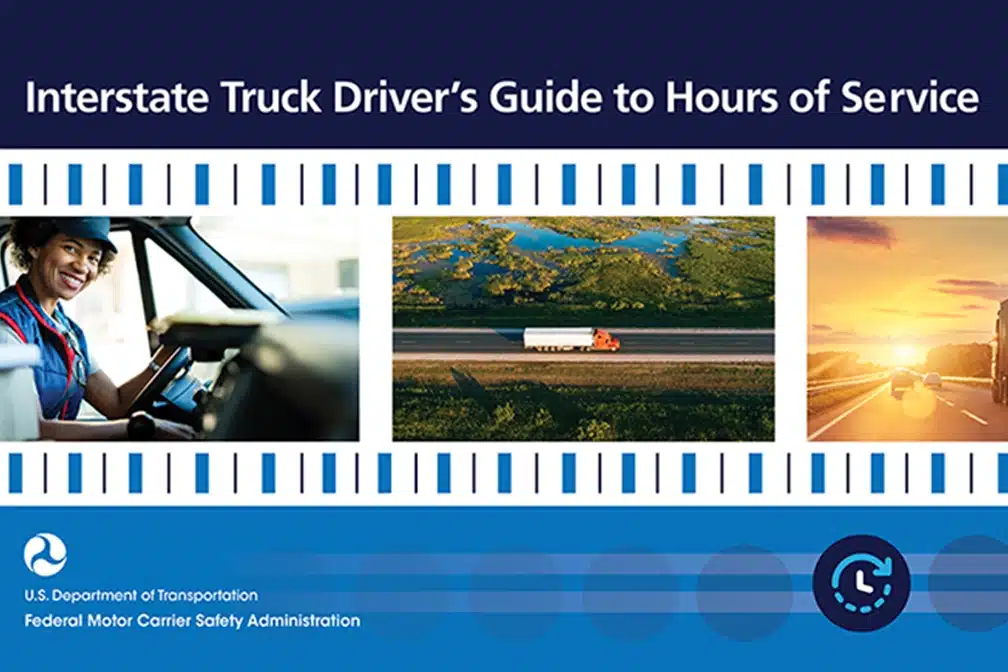July 27, 2024 12:42 am
BRINGING THE AMERICAN TRUCK DRIVER THE LATEST TRUCK DRIVER NEWS
Expert Advice to Avoid Mistakes Regarding
Hours of Service Regulations
Hours of Service Regulations ensure the safety of truckers and the general public. The FMCSA & DOT dictate how long truckers are on duty & when to take breaks.

The Hours of Service (HOS) regulations are crucial for ensuring the safety of truck drivers and the general public. These rules, established by the Federal Motor Carrier Safety Administration (FMCSA) and the US Department of Transportation (DOT), dictate how long truck drivers can be on duty and when they must take breaks. Compliance with these regulations helps prevent fatigue-related accidents, which are a significant concern in the trucking industry.
Federal Hours of Service Regulations
Driving and On-Duty Limits
- 11-Hour Driving Limit: Drivers can drive a maximum of 11 hours within a 14-hour period after coming on duty, following 10 consecutive hours off duty.
- 14-Hour Shift Limit: Drivers cannot drive beyond the 14th consecutive hour after coming on duty, even if they haven’t driven for the entire 14 hours.
- 30-Minute Break: After 8 cumulative hours of driving, drivers must take a 30-minute break before continuing to drive.
- 60/70-Hour Weekly Limit: Drivers cannot drive after 60 hours on duty in 7 consecutive days or 70 hours in 8 consecutive days. This period resets after 34 consecutive hours off duty.
Special Provisions
- Sleeper Berth Provision: Drivers can split the required 10-hour off-duty period into two periods: one period must be at least 8 consecutive hours in the sleeper berth, and the other must be at least 2 consecutive hours, either off duty or in the sleeper berth.
- Adverse Driving Conditions: Drivers can extend their driving limit by up to 2 hours under unforeseen adverse conditions.
California’s Intrastate HOS Regulations
California has specific regulations for intrastate commerce that differ slightly from federal rules:
- 12-Hour Driving Limit: Drivers cannot drive more than 12 hours following 10 consecutive hours off duty.
- 16-Hour Duty Limit: Drivers must not drive after the 16th hour after coming on duty following 10 consecutive hours off duty.
- 80-Hour Limit in 8 Days: Drivers cannot drive after being on duty for 80 hours in any 8 consecutive days. This can reset with a 34-hour off-duty period.
Exceptions in California
- Entertainment Industry: Drivers transporting property for film or television production within a 100 air-mile radius can drive up to 12 hours following 8 consecutive hours off duty.
- Utility Service Vehicles: Exempt from all hours-of-service regulations while operating during emergencies.
- Farm Products, Firefighters, and Law Enforcement: Various exemptions apply under specific conditions.
Logging Requirements
Truck drivers must keep detailed logs of their driving hours and duty status. These logs can be electronic (ELDs) or paper-based, depending on the specific circumstances:
- Electronic Logging Devices (ELDs): Required for most commercial drivers to automatically record driving time.
- Paper Logs: Required for drivers operating within a 100 air-mile radius if certain conditions are met, such as returning to the same location and not exceeding 12 hours of duty time.
Importance of Compliance
Compliance with Hours of Service Regulations is critical for several reasons:
- Safety: Ensures that drivers are well-rested and alert, reducing the risk of fatigue-related accidents.
- Legal Obligations: Avoids fines and penalties from regulatory bodies. Fines can range from $1,100 to $16,000 per violation.
- Insurance: Non-compliance can lead to higher insurance premiums and potential denial of claims.
- Operational Efficiency: Helps maintain smooth operations and avoid disruptions due to out-of-service orders.
How to Stay Compliant
- Use ELDs: Electronic Logging Devices help ensure accurate tracking of hours.
- Regular Training: Stay updated with the latest HOS regulations through FMCSA’s online learning tools.
- Trip Planning: Plan routes and schedules to incorporate mandatory breaks and rest periods.
- Monitor Weather Conditions: Be aware of adverse driving conditions that may affect driving time.
Looking Ahead
Hours of Service regulations are a cornerstone of truck driver safety. By understanding and adhering to these rules, drivers can ensure not only their safety but also the safety of others on the road. Regular training, proper logging, and diligent planning are key to maintaining compliance and promoting a safe driving environment in the trucking industry.
Recent Posts
Copyright 2024. All Rights Reserved.
